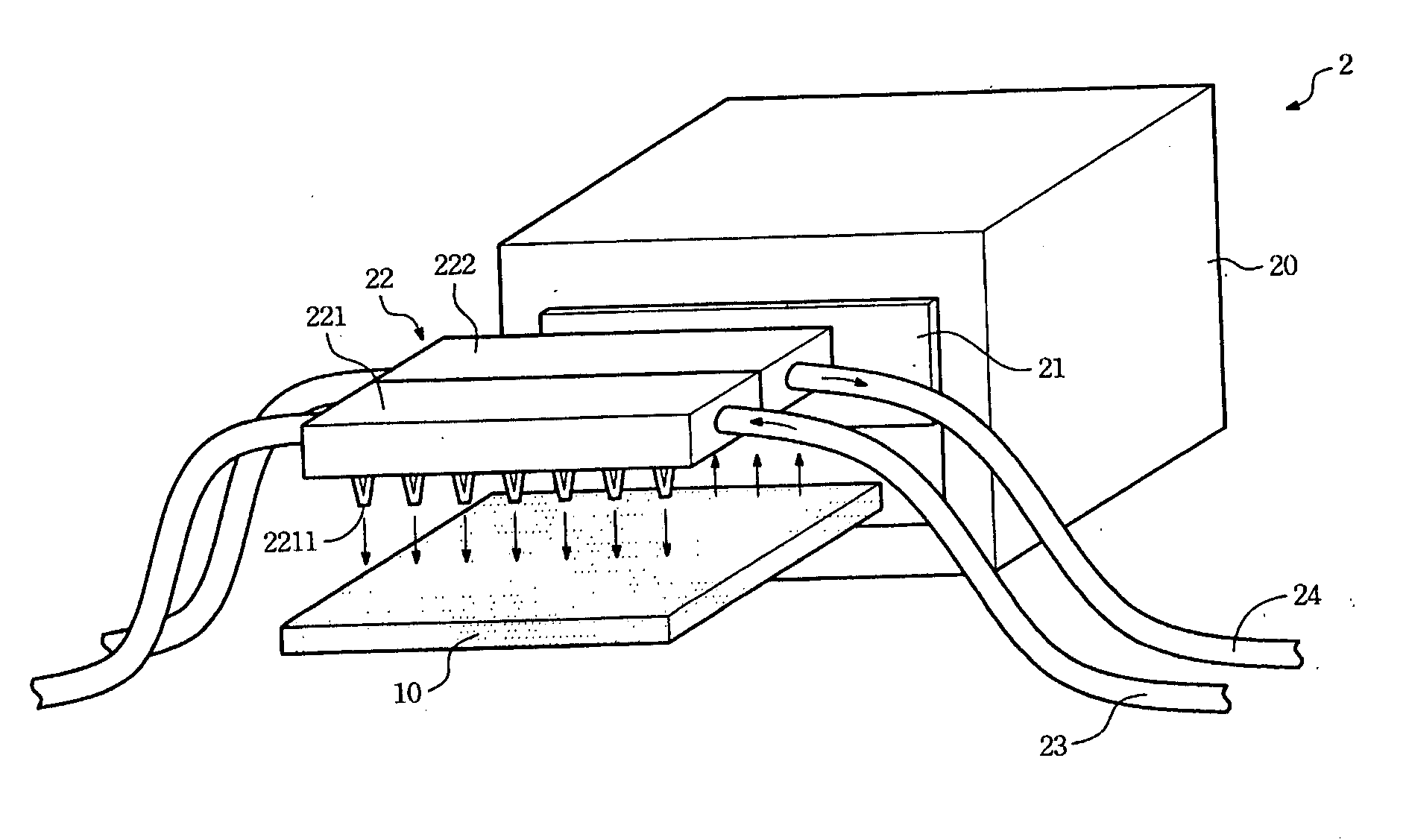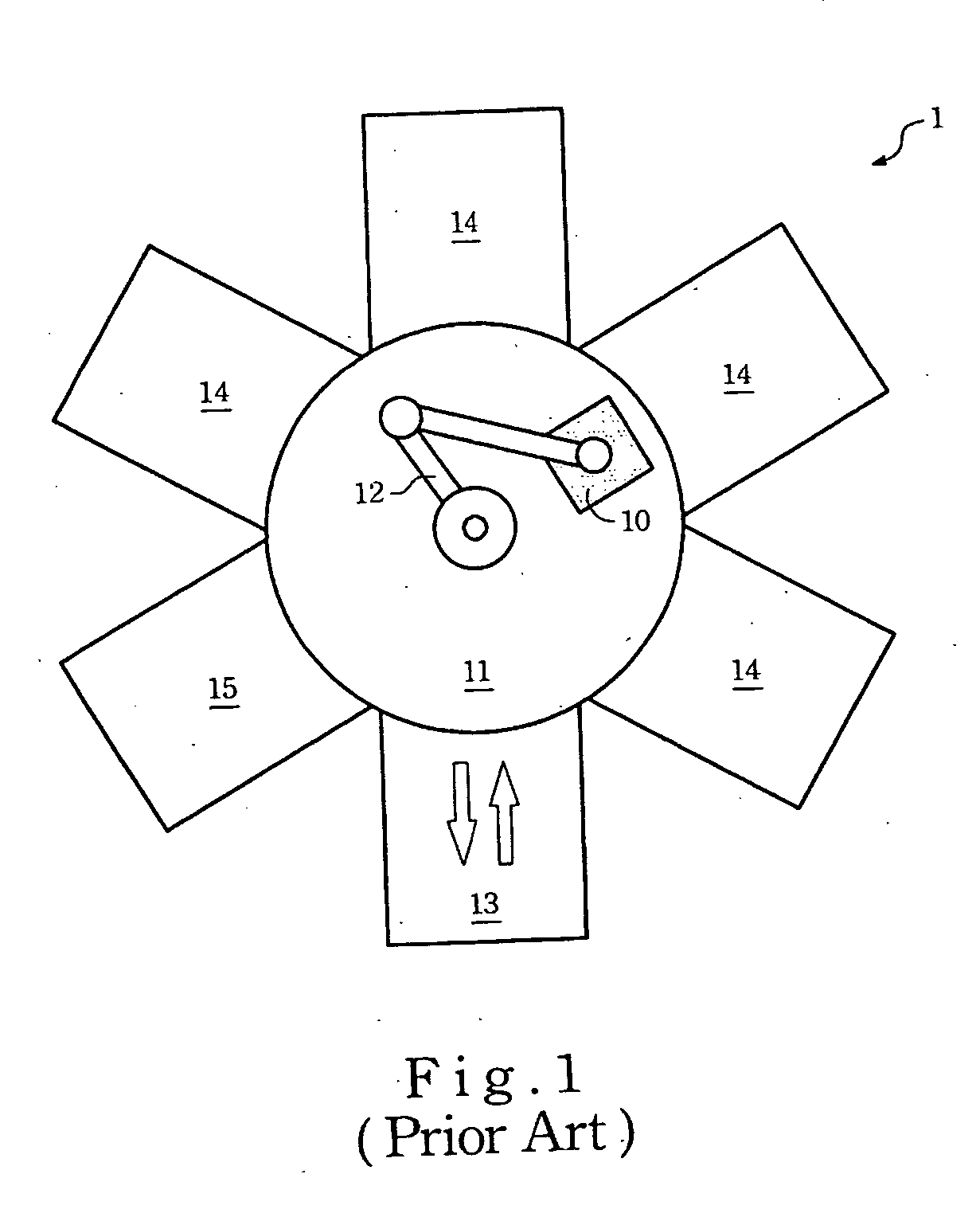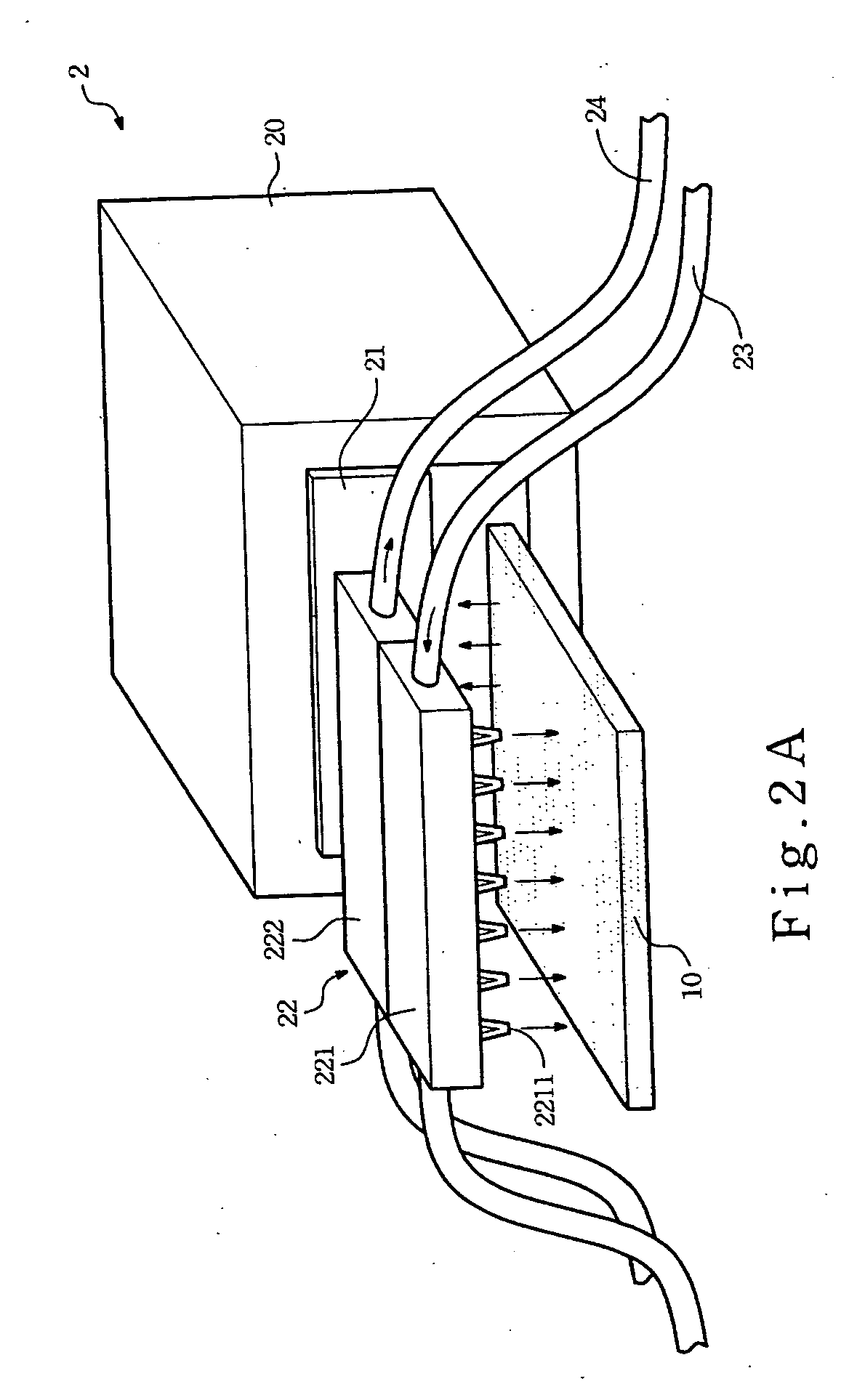Cleaning system
a cleaning system and cleaning technology, applied in the field of cleaning systems, can solve the problems of reducing the cleaning efficiency, jeopardizing the manufacturing of lcds, and product defects, and achieve the effect of reducing the cleaning time of the substra
- Summary
- Abstract
- Description
- Claims
- Application Information
AI Technical Summary
Benefits of technology
Problems solved by technology
Method used
Image
Examples
Embodiment Construction
[0038] The invention disclosed herein is directed to a cleaning system. In the following description, numerous details are set forth in order to provide a thorough understanding of the present invention. It will be appreciated by one skilled in the art that variations of these specific details are possible while still achieving the results of the present invention. In other instance, well-known components are not described in detail in order not to unnecessarily obscure the present invention.
[0039] Referring to FIG. 2A, a preferred cleaning system in accordance with the present invention is structured as shown. The cleaning system 2, can be disposed in an etching machine for etching glass substrates 10 coated with photoresist.
[0040] Referring to FIG. 2B, it is a schematic diagram to show an action of the particle-removing device of FIG. 2A. As shown, the cleaning system 2 comprises a chamber 20, a gate 21, a particle-removing device 22, a gas piping 23 and a vacuum piping 24. The ...
PUM
 Login to View More
Login to View More Abstract
Description
Claims
Application Information
 Login to View More
Login to View More - R&D
- Intellectual Property
- Life Sciences
- Materials
- Tech Scout
- Unparalleled Data Quality
- Higher Quality Content
- 60% Fewer Hallucinations
Browse by: Latest US Patents, China's latest patents, Technical Efficacy Thesaurus, Application Domain, Technology Topic, Popular Technical Reports.
© 2025 PatSnap. All rights reserved.Legal|Privacy policy|Modern Slavery Act Transparency Statement|Sitemap|About US| Contact US: help@patsnap.com



